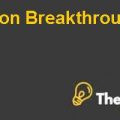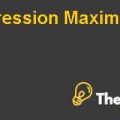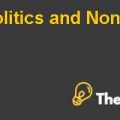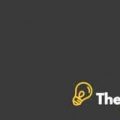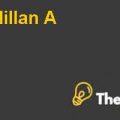CLASSICAL MACROECONOMIC MODEL Case Study Solution
INTRODUCTION
In the Classical macroeconomic model, the basic fundamental principle of the model is that the economy has the potential to achieve the natural level of real GDP or output regardless of the other factors. In this model, the economic resources are considered fully employed that obtained the real GDP. The Classical theory implies that economy has a self-adjustment mechanism that brings the economy back to their natural level of real GDP.
CLASSICAL MACROECONOMIC MODEL
The classical model theory primarily based on the two molds:
- The supply of money determines the equilibrium value of the price level and the inflation rate.
- The equilibrium value of the real variables (CPI and GDP-deflator) can be determined without knowing the price level and the inflation rate.
In Classical model theory, aggregate demand expresses the total money exchange for the product and services produced in an economy. It measures the all final product and services produced in the market. Demand implies the consumer’s desires and how much the consumer willingly to pay the price for the particular product and services. An increase in the price of a good or service decreases the demand for the particular good or service and vice versa.
Equilibrium is the state in which the demand and supply of the good and services are balanced to each other. In the market, the demand and supply of a particular product and service are determined the price of the good and services if the demand goes high and supply remain same, so the price of the particular good and service increases and vice versa.
In the markets, firms (including businesses and corporation) exists to maximize the profit by producing the goods and the services. Classical economists imply that in the economy,the interest rate will fall, so causing of that investor demands more of the available savings. Furthermore, the available savings lead to an increase investment expenditures through the reflection in the reduction of interest rate. In the classical model,the flexibility in the interest rate keeps the money market and loan able funds, equilibrium in a particular interval and prevent the real GDP falling from its natural level.
In addition, the flexibility in the real wage rate keeps the labor market stable.The real wage is determined by the supply of the labor in the market if the supply of the labor exceeds the demands of labor, the wage paid to the labor fall so as to ensure in the market that labor is fully employed.
In Say’s Law, it implies that the economy produces the certain level of good and services, along with that it also generates the income needed to purchase those good and services. Hence, the economy has the capacity to demand the output from its worker and firms choose to produce and to achieving the natural level of real GDP.
CLASSICAL MACROECONOMIC MODEL Harvard Case Solution & Analysis
CONCLUSION
In conclusion, the classical model theory reflects the aggregate demand and supply, it also discusses the Say’s Law and technological advancement. On these factors, economy can achieve the real GDP................
This is just a sample partial case solution. Please place the order on the website to order your own originally done case solution.

